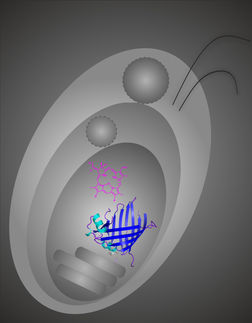First identification of endocrine disruptors in algae blooms
Scientists are reporting for the first time that previously unrecognized substances released by algae blooms have the potential to act as endocrine disruptors, which can interfere with the normal activity of reproductive hormones. The effect is not caused by microcystin toxins, long recognized as potentially harmful to humans and aquatic animals, but as yet unidentified substances. As a result, the scientists are calling for a revision of environmental monitoring programs to watch for these new substances. The findings appear in ACS's journal Environmental Science & Technology.
Theodore Henry and colleagues note that harmful blooms of toxin-producing algae, called cyanobacteria or blue-green algae, occur in waters throughout the world and are a growing health and environmental concern. The algae produce microcystins that can harm fish, plants, and human health. Possible human health effects include skin rashes, fever, and liver damage. Although scientists have focused mainly on microcystins' biological effects, new evidence suggests that other potentially harmful substances also may be present.
In an effort to find out, Emily Rogers supervised by Theodore Henry, and co-authors Michael Twiner, Julia Gouffon, Jackson McPherson, Gregory Boyer, Gary Sayler, and Steven Wilhelm turned to zebrafish, often used as a stand-in for people and other animals in laboratory experiments. They found that something released by algae, other than microcystins, had an endocrine disrupting effect on the fish. The report recommends that environmental protection agencies may need to update monitoring programs for algae blooms to include potential endocrine-disrupting substances.
Original publication
Other news from the department science

Get the life science industry in your inbox
By submitting this form you agree that LUMITOS AG will send you the newsletter(s) selected above by email. Your data will not be passed on to third parties. Your data will be stored and processed in accordance with our data protection regulations. LUMITOS may contact you by email for the purpose of advertising or market and opinion surveys. You can revoke your consent at any time without giving reasons to LUMITOS AG, Ernst-Augustin-Str. 2, 12489 Berlin, Germany or by e-mail at revoke@lumitos.com with effect for the future. In addition, each email contains a link to unsubscribe from the corresponding newsletter.






















































